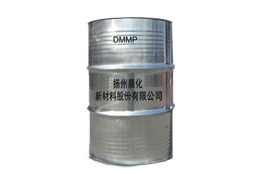In the building materials, most of the building plastics are flammable materials, a few are flammable materials. Plastic has the characteristics of high combustion heat, high gun temperature, fast combustion speed, releasing a lot of smoke and toxic gases in fire. Therefore, building plastics must have flame retardant properties. Professional flame retardant manufacturers will introduce the flame retardant treatment methods of building materials to you.

Which flame retardant is good? In the era of economic development, flame retardant is an indispensable additive in many industries. However, there is no universal flame retardant in the world, and each flame retardant has only a certain range of application. Therefore, how to compare flame retardants and choose excellent flame retardants is the key to solve the problem of flame retardancy.
In fact, the common method to determine the quality of flame retardant is to use different flame retardants to treat the same flame retardant without changing other conditions (temperature, dosage, concentration, treatment time, etc.). It is not reasonable to use this method to observe high-quality flame retardants, because different flame retardants have different effects on flame retardants, so a single method can not be used to judge the quality of flame retardants.
Environmental flame retardants play three main roles in fire
1. Covering effect.
After adding environmentally friendly flame retardants in combustible materials, a glass or stable foam covering layer can be formed at high temperature, which can insulate oxygen and prevent oxygen from escaping from flammable gas, thereby achieving the purpose of flame retardancy. The reason is that on the one hand, it can prevent the polymer from further pyrolysis, on the other hand, it can prevent the thermal decomposition products from entering the gas phase to participate in the combustion process.
2. Inhibition chain reaction.
According to the chain reaction theory of combustion, free radicals are needed to maintain combustion. Environmental friendly flame retardant can act on the gas phase combustion zone to prevent the spread of flame, reduce the flame density in the combustion zone, and reduce the combustion reaction speed until the end. For example, the evaporation temperature of halogen-containing flame retardant is the same as or close to the decomposition temperature of polymer. When the polymer is decomposed by heating, the flame retardant also volatilizes. It can capture the free radicals in the combustion reaction, so as to prevent the spread of flame, reduce the flame density in the combustion Zone, and finally reduce the combustion reaction speed until the end.
3. Asphyxiation of incombustible gas.
The environment-friendly flame retardant decomposes the harmful gas when heated, dilutes the concentration of combustible gas below the lower limit of combustion, dilutes the oxygen concentration in the combustion zone, and prevents the combustion from continuing, so as to achieve the effect of flame retardant.